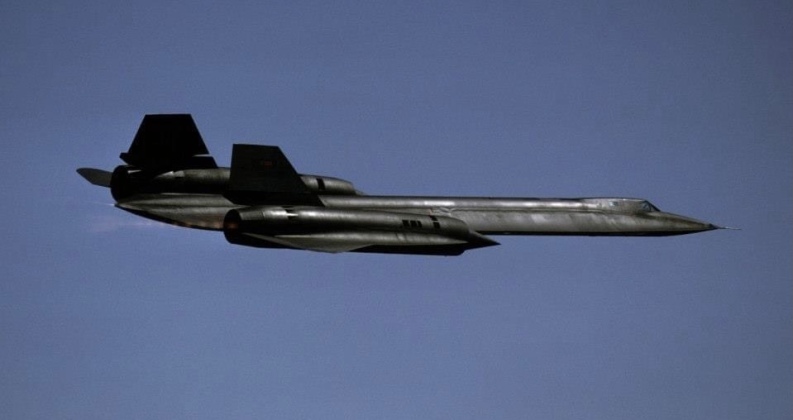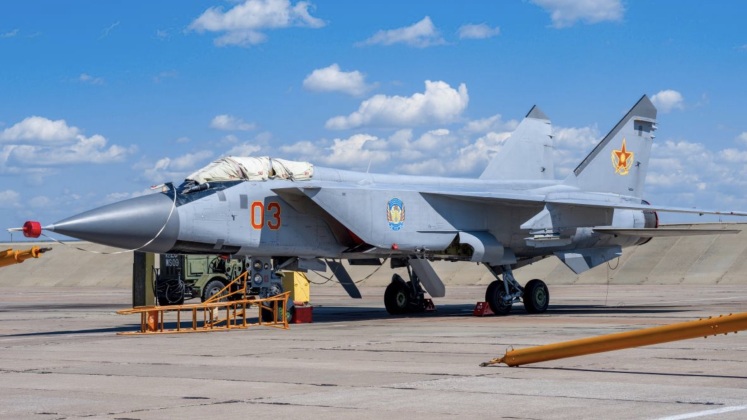News
Foxbat Hunting: How America’s Elite F-14 and F-15 Units Trained to Eliminate Mach 3+ Soviet MiGs – Part Two
Continued from Part One
During the Iran-Iraq War the Iranian F-14 fleet was forced to develop its own tactics to intercept the MiG-25, as the country’s U.S. made air defences and third generation F-4 fighters were otherwise totally incapable. Even for the Tomcats which had major advantages in armaments and missiles over all other fighter classes at the time, the MiG-25 proved a serious challenge. The first engagement between the Tomcat and Foxbat ended in a draw, with both damaging the other in long range engagements but failing to cause irreparable damage in a one-on-one engagement. As the Iraqi MiG-25s operated at 20km altitudes usually between Mach 1.9 and Mach 2.4, which made them extremely difficult to target, Iranian Tomcats were forced to climb to maximum altitude and accelerate to supersonic speeds. The MiG-25 was the only Iraqi aircraft which could get past the F-14 which otherwise dominated the skies, but Iraq notably failed to use these aggressively to contest air superiority and instead largely used its Foxbats for strategic bombing to terrorise Iranian population centres.

U.S. F-14 and F-15 units notably trained to intercept high speed adversaries by using the American SR-71 Blackbird reconnaissance platform to simulate the MiG-25’s capabilities. The Blackbird was a much more expensive and longer ranged aircraft than the Foxbat fielded in very small numbers, but was capable of operating at similar speeds and altitudes although unlike the Foxbat it was never built for combat. The SR-71 was similarly if not more survivable than the MiG-25, and although it was challenging both U.S. air superiority fighters managed to obtain simulated kills against the class. According to SR-71 pilot Colonel Richard H. Graham Blackbird pilots “had flown numerous ‘Tomcat Chase’ and ‘Eagle Bait’ sorties against our best fighters — the Navy’s F-14s and the Air Force’s F-15s. We flew the SR-71 to provide the fighters practice at finding, tracking, locking on, intercepting, and simulated firing of their sophisticated F-14 Phoenix missiles and the F-15’s Sparrow missiles at a high altitude, high speed target. The Tomcat Chase missions were flown over the Pacific Ocean and Eagle Bait missions in the Nellis AFB training area, north of Las Vegas, Nevada.”

Col. Graham elaborated on the lessons learned by F-14 and F-15 operators attempting to intercept the Blackbird, and the difficulties these advanced air superiority fighters had in targeting such high speeds aircraft:
“At the start of Eagle Bait missions, the F-15s discovered that their fire control system speed gate (the computed closing velocity between two aircraft) was not large enough to accommodate their extreme closing velocity against the SR-71. Software changes to their computers solved that problem. If the fighters decided not to climb and remained at twenty-five thousand feet, for example, their missiles found it very extremely difficult to climb up fifty-five thousand feet (against gravity) to achieve a kill against the SR-71. Another factor in our favour was the small guidance fins on their missiles. They are optimised in size for guiding a missile to its target in the thicker air from the ground up and around forty thousand feet. At eighty thousand feet the air is so thin that full deflection of the missile’s guidance fins can barely turn it.”

The MiG-25 made a final demonstration of its survivability before the USSR’s disintegration during the Gulf War, when U.S. Air Force F-15 units were left hard pressed to intercept the aircraft which, in their final engagement with the Eagles, came out on top with 1:0 kills. Although the airframe design had considerable potential to incorporate further upgrades, the MiG-25 was retired from Russian service in 2013 as sharp post-Soviet budget cuts forced the fleet to contact to a fraction of its former size. The Foxbat remains the most capable fighter or interceptor a Western air force has ever engaged in combat, and the final unit fielding the class in the Algerian Air Force only retired it in 2022. Ultimately with the commissioning of the MiG-31 Foxhound, a far more advanced Soviet interceptor which entered service in 1981, U.S. air superiority fighters needed more than ever to be prepared to face high speed targets. Although the MiG-31 had never engaged U.S. fighters in the air, and is operated only by Russia and Kazakhstan, it remains a formidable threat to U.S. fighters today with an unmatched engagement range of around 400km using its R-37 missiles. The potency of these capabilities, which remains unique both within the Russian Air Force and internationally, has been demonstrated from 2022 in the Russian-Ukrainian War.












